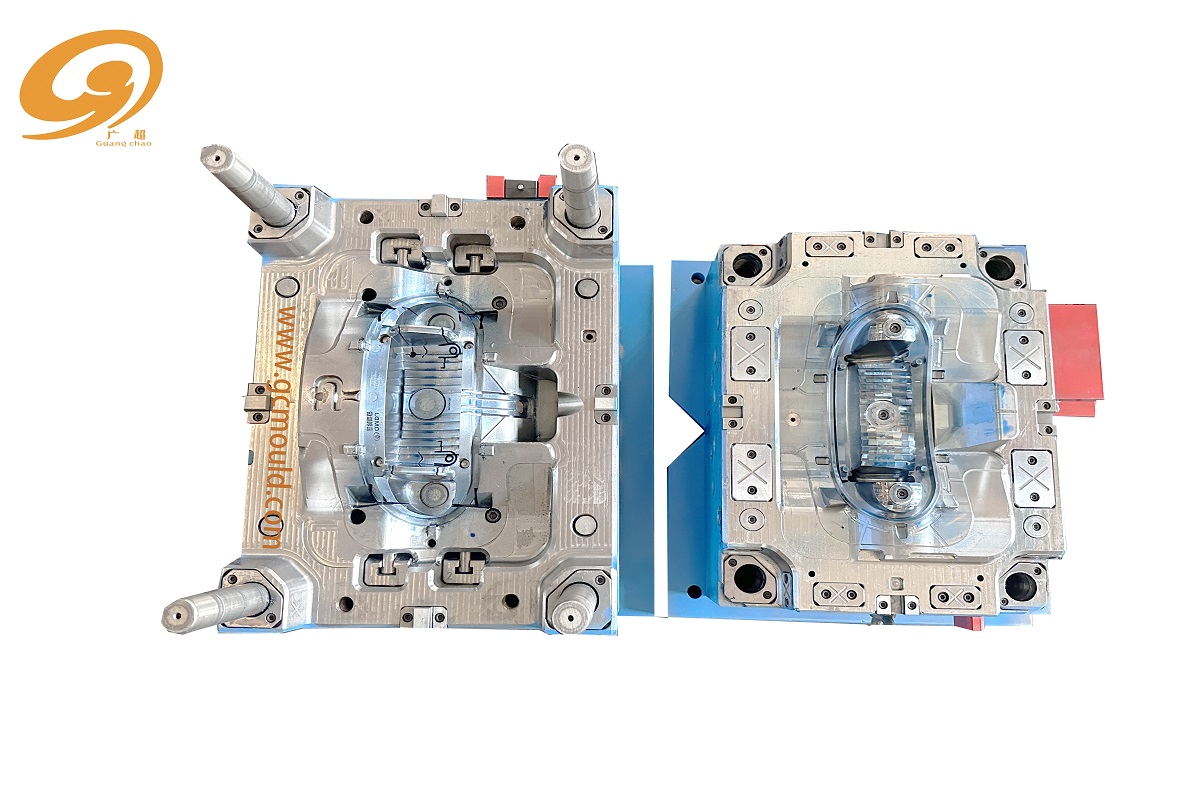Views: 0 Author: Site Editor Publish Time: 2025-02-14 Origin: Site











Motorcycle tail lights are more than just a safety feature; they’re an integral part of a bike’s design and functionality. The evolution of tail light molds has played a crucial role in the transformation of these lights, making them more efficient, durable, and visually appealing. This article explores the journey of tail light molds, their significance in modern motorcycle manufacturing, and the innovations that have shaped them.
The significance of tail lights in motorcycle safetyA brief history of tail light technologyThe evolution of tail light moldsInnovations in tail light design and functionalityFuture trends in motorcycle tail lights

Tail lights are critical for safety, ensuring visibility and communication with other road users. They serve multiple functions, including signaling, braking, and illuminating the rear of the motorcycle during low-light conditions.
Tail lights enhance visibility, making motorcycles more noticeable to other drivers. This is especially important in poor weather conditions or at night. A well-functioning tail light can prevent accidents by alerting other vehicles to the motorcycle’s presence.
Communication is another key function of tail lights. They signal a motorcycle’s intentions, such as when a rider is slowing down or preparing to turn. This communication is vital for maintaining safe distances between vehicles and preventing collisions.
In many countries, functioning tail lights are a legal requirement for motorcycles. Regulations often specify the type, brightness, and positioning of tail lights to ensure uniformity and safety on the roads. Compliance with these standards is crucial for legal operation and can affect insurance and liability in case of accidents.

The history of tail light technology for motorcycles is a testament to innovation and adaptation. From the early days of motorcycles, where tail lights were non-existent or rudimentary, to the modern era of sophisticated lighting systems, the evolution has been significant.
The first tail lights on motorcycles were simple incandescent bulbs. These bulbs, while functional, were not very bright and had a short lifespan. The introduction of halogen lights was a significant improvement. Halogen bulbs provided brighter light and lasted longer than traditional incandescent bulbs, enhancing the safety and visibility of motorcycles on the road.
The real revolution in tail light technology came with the shift to LED (Light Emitting Diode) lights. LEDs are more energy-efficient, longer-lasting, and brighter than traditional halogen bulbs. They also offer greater design flexibility, allowing manufacturers to create more compact and aesthetically pleasing tail light designs.
The evolution of tail light molds
Tail light molds have evolved significantly, reflecting advancements in technology and changes in design preferences. This evolution is crucial for manufacturers to keep pace with the demands for more efficient, durable, and visually appealing tail lights.
Early tail light molds were simple and straightforward, often just a basic housing for an incandescent bulb. As technology advanced, so did the complexity of tail light designs. Modern tail lights often incorporate complex shapes and multiple lighting elements, requiring intricate molds to produce.
The shift from metal to plastic in tail light manufacturing has been a game-changer. Plastics are lighter, more versatile, and can be molded into complex shapes more easily than metal. This shift has allowed for more innovative designs and has also contributed to the overall reduction in the weight of motorcycles, improving fuel efficiency and performance.
The world of motorcycle tail light design has witnessed remarkable innovations that significantly enhance both safety and aesthetic appeal. These advancements go beyond mere illumination; they represent a fusion of technology and creativity, elevating the overall riding experience. With an emphasis on functionality and style, modern tail lights have become essential components that not only serve a practical purpose but also contribute to the motorcycle's overall design language.
Adaptive lighting systems have emerged as a groundbreaking advancement in motorcycle tail light technology. These systems are engineered to dynamically adjust the intensity and direction of the tail lights, significantly improving visibility and safety on the road. For instance, during braking, the tail light's brightness can increase, providing a clear signal to drivers behind the motorcycle. This feature is particularly crucial in reducing the chances of rear-end collisions. Additionally, when a motorcycle leans into a turn, adaptive lighting can pivot the tail light to illuminate the path ahead, ensuring that the rider has better visibility of the road and any potential hazards. This level of responsiveness not only enhances safety but also instills confidence in riders, making night-time journeys safer and more enjoyable.
The integration of tail lights with the rear design elements of motorcycles marks a significant trend in contemporary motorcycle design. Manufacturers are increasingly focusing on creating seamless connections between tail lights and the overall aesthetics of the vehicle. By incorporating tail lights into the rear body panels, designers can achieve a sleek, streamlined appearance that reduces drag and enhances aerodynamics. This integration helps eliminate the clutter of protruding components, resulting in a more cohesive and visually appealing design. The modern tail light is no longer just a functional piece; it is an integral element of the motorcycle's visual identity, contributing to a harmonious and sophisticated look that appeals to both riders and onlookers alike.

The future of motorcycle tail lights is poised for further advancements, driven by technological innovations and changing consumer preferences.
Smart tail lights are expected to be a significant trend in the future. These lights will feature connectivity options, allowing them to communicate with other vehicles and devices. For instance, a motorcycle’s tail light could connect with a smartphone app to provide real-time information about the bike’s status, including whether the lights are functioning properly.
As sustainability becomes a more significant concern, eco-friendly and energy-efficient designs are expected to dominate the market. This could include the use of recyclable materials in tail light construction and designs that consume less energy without compromising performance.
Future tail lights will likely incorporate advanced technologies to enhance safety. This could include features like brake lights that flash in emergency situations or tail lights that change color based on the motorcycle’s speed or maneuvering.
The evolution of tail light molds in modern motorcycle manufacturing reflects the industry’s commitment to safety, innovation, and design. As technology continues to advance, tail lights will undoubtedly become more sophisticated, playing an even more crucial role in the safety and aesthetics of motorcycles. The journey of tail light molds is a testament to how even small components can significantly impact the overall performance and appeal of a vehicle.
